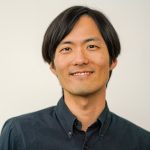
Hyun Youk
UMass Chan Medical School
Life in slow lane: yeast in dormancy and at frigid temperatures
Abstract: Living systems are marked by their ability to remain out of thermal equilibrium for much longer than the lifetimes of their constituent parts. It is unclear what principles allow one cell or a collection of cells to evade thermal equilibration for a long time (i.e., avoid dying for a long time). A dormant microbial spore is an intriguing system for potentially uncovering any fundamental limits to staying out of thermal equilibrium in that a dormant spore shows no apparent signs of life and is conventionally thought to be static until it “wakes up” to enter a dynamic, replicative state of life when nutrients appear. In the first part of my talk, I’ll describe how to distinguish dormancy from death and how dormancy transitions to death in yeast spores. In second part of my talk, I will describe how yeast cells duplicate at near-freezing temperatures. By increasing the temperature to sufficiently high values or decreasing the temperature to sufficiently low values, we placed yeast cells at the (apparent) edge of their capacity to duplicate. For both high temperatures (> 38 C) and near-freezing temperatures (0 C – 5 C), we found ways to extend yeast’s ability to duplicate: we could enable more cells to duplicate with drastically shortened doubling times. We constructed “phase diagrams” that describe cell-population growths for both temperature regimes. The same mathematical model, with one free parameter, reproduced both phase diagrams as well as stochastic proliferation of individual cells. At near-freezing temperatures, we discovered “speed limits” – slowest and fastest possible doubling times – at which a yeast cell’s life can progress: a cell that progresses more slowly than a “low-speed limit” defined for each temperature faces a certain death. A mathematical model and experimental data elucidated how these speed limits arise. We hope that these lines of research can guide us in finding generalizable and quantitative principles that allow cells to keep themselves out of thermal equilibrium for longer than many non-living systems can.
Biosketch: I’m an associate professor of systems biology at the University of Massachusetts Chan Medical School. From 2015 to 2020, I was an assistant professor of physics and quantitative biology at the Delft University of Technology in the Netherlands. My lab uses experiments and computer simulations to understand what it means to “live” and “die”. Is death inevitable? If so, why is that? If not, then why do organisms die? To answer these questions, my lab uses organisms that appear to be “dead” but are, in fact, alive (e.g., dormant spores). I obtained PhD in physics at MIT in 2010 where I first became interested in using quantitative approaches to understand living systems. Aside from tackling scientific problems, I enjoy teaching and mentoring students in classrooms. As a first-generation college graduate, immigrant, and a member of LGBTQ+ community in STEM, I hope that I can be a role model for students from underrepresented groups who wish to pursue a career in science.